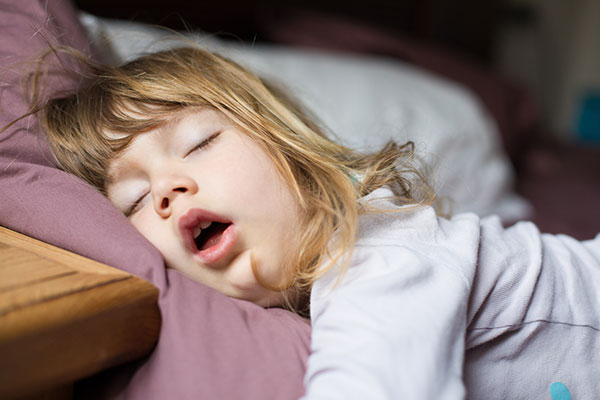Sleep Apnea in Children
Sleep apnea is when a person stops breathing during sleep. Sleep apnea can be obstructive, central, or mixed. Obstructive sleep apnea (OSA), the most common, is caused by a blockage of the airway during sleep.
Obstructive sleep apnea (OSA) interrupts sleep and can make the body’s oxygen levels fall and carbon dioxide rise. Sleep apnea interrupts a child’s sleep and causes other medical concerns or death.
What Causes Obstructive Sleep Apnea in Children?
During sleep, the muscles in the back of the throat relax. In obstructive sleep apnea, these muscles relax too much and block the child’s airway, making breathing difficult. When combined with large tonsils or adenoids, an airway blockage can occur.
A past or current medical condition can contribute to obstructive sleep apnea:
- a family history of OSA
- overweight or obesity
- Down syndrome or cerebral palsy
- problems of the mouth, jaw, or throat that narrow the airway
- a large tongue, which can fall back and block the airway during sleep
Symptoms of Obstructive Sleep Apnea in Children
Symptoms of Obstructive Sleep Apnea include:
- snoring, snorts, or gasps for air during sleep
- heavy breathing
- restless sleep and turning in bed
- wetting the bed
- difficulting waking up in the morning
- sleepiness during the day
- behavior or learning problems
- sleepwalking or night terrors
How Is Obstructive Sleep Apnea Diagnosed?
Your Pediatrician or Pediatric ENT specialist may refer your child for a sleep study or polysomnogram. A sleep study can help doctors diagnose sleep apnea and other sleep disorders. Sleep studies are painless but may require a night in a hospital or sleep center.
How Is Obstructive Sleep Apnea Treated in Children?
When obstructive sleep apnea is mild, nasal sprays or other medicines may help some kids with mild obstructive sleep apnea. When tonsils are big and cause sleep apnea, pediatricians refer children to a Pediatric ENT specialist evaluation.
The Pediatric ENT provider may recommend a tonsillectomy to remove the tonsils or an adenoidectomy to remove the adenoids. If necessary, an adenotonsillectomy would be the removal of both the tonsils and adenoids.
Sometimes, a continuous positive airway pressure (CPAP) machine worn during sleep is a solution. CPAP therapy provides constant air to keep the airways open to prevent sleep apnea.


